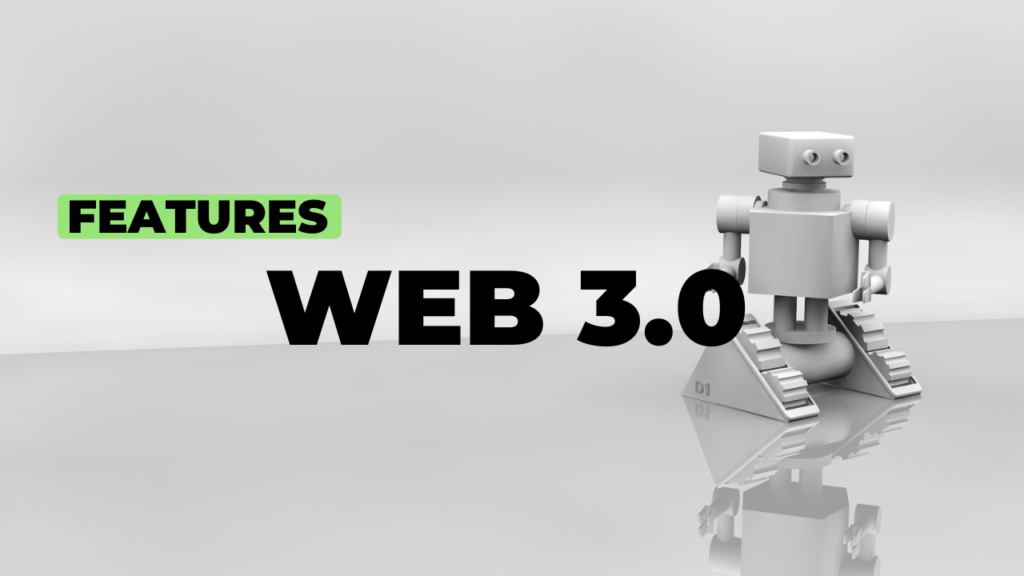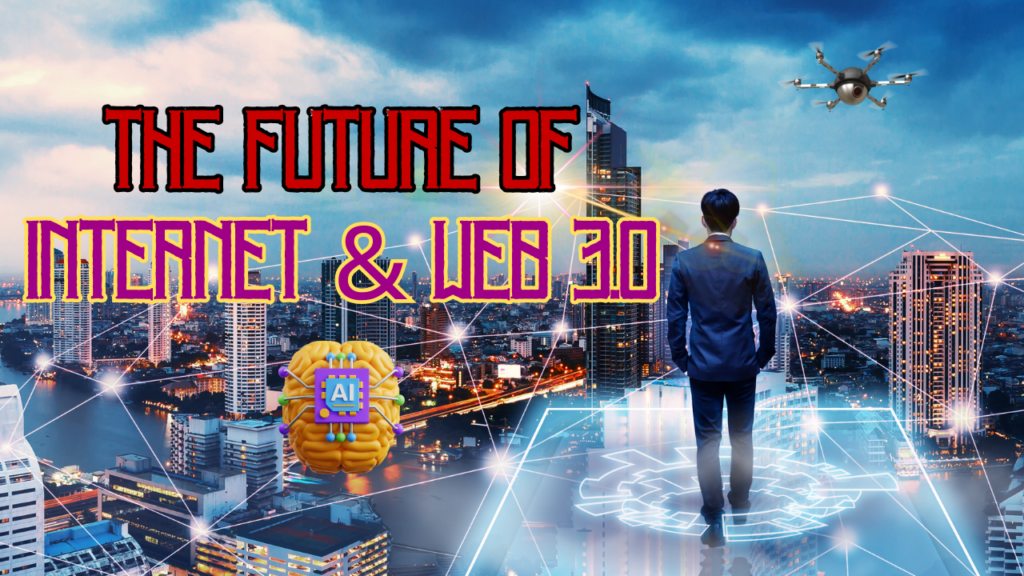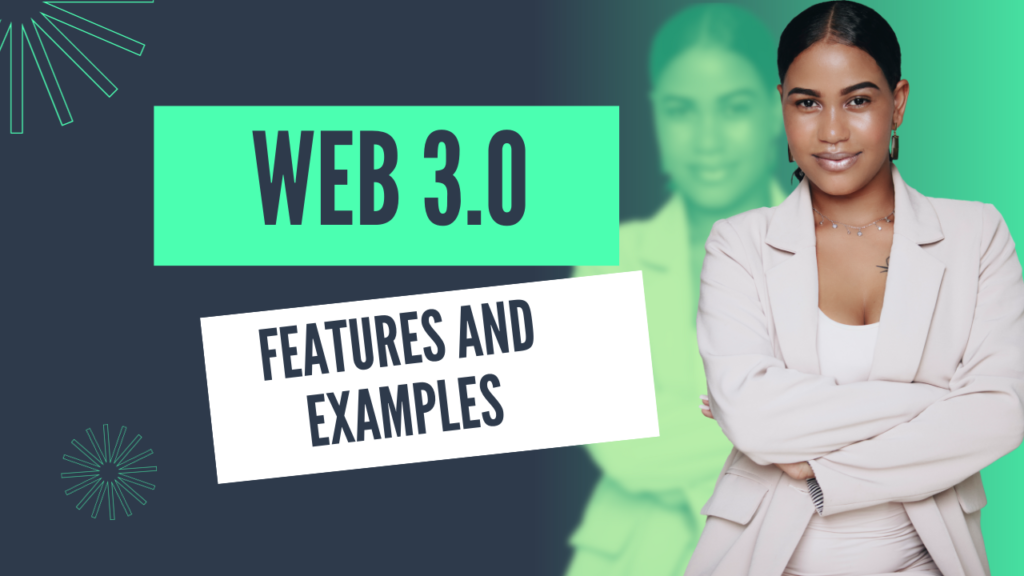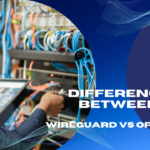Table of Contents

Introduction: Web 3.0 Features and Examples
As we step into the era of Web 3.0, (Web 3.0 Features and Examples) the internet is undergoing a revolutionary transformation, bringing forth a new wave of features that promise a more decentralized, intelligent, and user-centric online experience. In this blog post, we’ll explore the top 10 Web 3.0 features that are shaping the future of the Internet. From blockchain integration to enhanced user privacy, each feature represents a significant leap forward in how we interact with the digital realm. Let’s dive into the exciting world of Web 3.0 and discover real-world examples of these transformative features.
Step 1: Decentralization through Blockchain
Features:
Decentralization: The core principle of Web 3.0’s first step involves distributing control and data across a network of nodes, eliminating the reliance on a central authority.
Blockchain Technology: Utilizes blockchain, a decentralized and tamper-resistant ledger, to record and validate transactions. The blockchain is a chain of blocks, each containing a list of transactions, linked through cryptographic hashes.
Advantages:
Enhanced Security:
Blockchain employs cryptographic techniques to secure transactions. Once data is added to a block, it becomes resistant to alteration. The decentralized nature of the blockchain reduces the risk of a single point of failure and enhances overall security.
Transparency and Immutability:
Transactions on the blockchain are transparent and immutable. Every participant in the network has access to the same history of transactions, fostering trust. Once a block is added, it cannot be changed, ensuring data integrity.
Elimination of Intermediaries:
By removing intermediaries, such as banks or financial institutions, transactions become peer-to-peer. This not only reduces costs but also accelerates processes and minimizes the potential for errors or manipulation.
User Control over Data:
Decentralized identity systems empower users to control their data. Users can selectively share information without compromising privacy, ensuring that individuals have greater ownership of their digital identities.
Global Accessibility:
Decentralized systems are not confined by geographic borders. Anyone with an internet connection can participate, promoting inclusivity and providing access to financial and other services for individuals in regions with limited infrastructure.
Disadvantages:
Scalability Challenges:
Some blockchain networks face scalability issues, especially those using Proof-of-Work (PoW) consensus mechanisms. As the number of transactions increases, processing times can slow down, and transaction fees may rise.
Energy Consumption:
PoW blockchains, like Bitcoin, consume substantial computational power, contributing to environmental concerns. The energy-intensive mining process has led to debates about the sustainability of blockchain technology.
Regulatory Uncertainty:
The regulatory environment for blockchain and cryptocurrencies is evolving. Legal frameworks vary globally, leading to uncertainties that can affect the adoption and operation of decentralized systems.
Lack of Standardization:
The absence of standardized protocols among different blockchains poses challenges for interoperability and communication. Efforts to establish common standards are ongoing but remain a work in progress.
User Experience Complexity:
Interacting with decentralized applications (DApps) and managing cryptographic keys can be complex for non-technical users. Improving user interfaces and experience is crucial for wider adoption and usability.
Example: Ethereum
Ethereum exemplifies decentralization through blockchain by providing a platform for the creation of smart contracts and decentralized applications. Its blockchain facilitates transparent and secure execution of code without the need for intermediaries. Users can participate in the Ethereum network, contributing to its decentralized nature, and utilize smart contracts for various applications, from decentralized finance (DeFi) to non-fungible tokens (NFTs). Ethereum showcases the potential of decentralized systems in revolutionizing traditional processes and fostering innovation.
Step 2: Improved User Privacy
Features:
Enhanced Privacy Protocols: Web 3.0 prioritizes improved user privacy by incorporating advanced protocols that grant users greater control over their personal information.
Advantages:
User Empowerment:
Web 3.0 empowers users by providing them with more control over their personal data. Advanced privacy protocols enable individuals to decide how their information is collected, stored, and shared.
Reduced Dependence on Centralized Storage:
By minimizing reliance on centralized data storage, Web 3.0 reduces the risk of large-scale data breaches. Users can store their data in more secure, decentralized environments, enhancing overall privacy.
Enhanced Anonymity:
Privacy-focused features, such as ad and tracker blocking, contribute to enhanced user anonymity. Users can browse the internet with reduced tracking and profiling, leading to a more private online experience.
Prevention of Unauthorized Access:
Improved privacy protocols prevent unauthorized access to sensitive user information. Encryption techniques and advanced authentication methods contribute to securing user data against potential breaches.
Selective Data Sharing:
Users have the ability to selectively share their data, deciding which information they want to disclose for specific transactions or interactions. This selective sharing enhances privacy without compromising functionality.
Disadvantages:
Complex Implementation:
Implementing advanced privacy protocols can be technically challenging. Developing user-friendly interfaces and ensuring seamless integration without sacrificing functionality require careful consideration.
Balancing Privacy and Functionality:
There is a delicate balance between providing enhanced privacy and maintaining the functionality of online services. Striking the right balance without hindering user experience is an ongoing challenge.
Regulatory Compliance:
Privacy-focused features may need to comply with diverse and evolving regulations, adding complexity to the development process. Ensuring that privacy enhancements align with global and local privacy laws is crucial.
Example: Brave Browser
Privacy-Focused Features:
Brave Browser is an example of a Web 3.0 application that prioritizes user privacy. It incorporates features such as ad and tracker blocking, preventing websites from tracking users’ online behavior. The browser also includes a privacy-centric search engine, enhancing user anonymity during online searches.
Basic Attention Token (BAT):
Brave Browser integrates the Basic Attention Token (BAT), a cryptocurrency designed to reward users and content creators for their attention. Users can opt to view privacy-respecting ads in exchange for BAT tokens, creating a more transparent and user-controlled advertising ecosystem.
Brave Browser serves as a tangible example of how Web 3.0 technologies can be implemented to improve user privacy while introducing innovative mechanisms for content creators and consumers.
Step 3: Semantic Web for Intelligent Data
Features:
Semantic Web Integration: Web 3.0 incorporates the Semantic Web, which involves structuring data in a way that allows machines to understand and interpret the meaning behind information.
Advantages:
Improved Data Interpretation:
The Semantic Web enables machines to understand the context and meaning of data. This enhances the accuracy and relevance of search results, leading to a more intelligent and user-friendly web experience.
Enhanced Personalization:
By understanding the relationships between different entities, the Semantic Web facilitates personalized content recommendations. Users receive information and recommendations tailored to their preferences, improving overall user satisfaction.
Efficient Data Integration:
Semantic technologies enable more efficient integration of data from diverse sources. This interoperability ensures that information from various platforms and applications can be seamlessly combined, providing a more comprehensive view of relevant data.
Structured Data for Automation:
Structuring data in a machine-readable format allows for automation of certain tasks. Machines can process and analyze structured data more efficiently, leading to automated processes that save time and resources.
Disadvantages:
Data Complexity:
Implementing semantic technologies requires a structured approach to data, which can be complex. Converting existing data into a semantic format and maintaining consistency across diverse sources pose challenges.
Standardization Issues:
Achieving a standardized approach to semantic data across the web is challenging. Lack of universal standards can hinder the seamless integration and communication of data between different applications and platforms.
Example: Google’s Knowledge Graph
Contextual Understanding:
Google’s Knowledge Graph is an example of the Semantic Web in action. It goes beyond traditional keyword-based search to provide more contextually relevant results. For instance, if a user searches for “Leonardo da Vinci,” the Knowledge Graph not only presents links but also provides information about his life, contributions, and related artists.
Entity-Relationship Mapping:
The Knowledge Graph utilizes entity-relationship mapping to understand the connections between different entities, such as people, places, and concepts. This enables Google to offer a more intuitive and intelligent search experience by presenting information in a structured and interconnected manner.
Google’s Knowledge Graph showcases how the Semantic Web can enhance search capabilities, providing users with more meaningful and contextually rich information based on their queries.

Step 4: Interoperability Across Platforms
Features:
Seamless Integration: Web 3.0 emphasizes the importance of interoperability, allowing different platforms and applications to seamlessly communicate and share data.
Advantages:
Efficient Data Exchange:
Interoperability facilitates efficient data exchange between diverse platforms. Systems can communicate and share information without hindrance, leading to smoother workflows and enhanced user experiences.
Collaboration and Connectivity:
Platforms that prioritize interoperability encourage collaboration and connectivity. Users can engage with services from various providers, and businesses can integrate their offerings more seamlessly, fostering a more interconnected digital ecosystem.
User Convenience:
Users benefit from interoperability as they can use a single set of credentials, digital assets, or data across different platforms. This reduces the need for repetitive data entry and enhances overall convenience.
Innovation and Development:
Interoperability promotes innovation by allowing developers to build applications that can interact with existing platforms. This accelerates the development of new features and services without starting from scratch.
Disadvantages:
Security Concerns:
Ensuring secure data exchange between platforms can be challenging. Interoperability introduces potential vulnerabilities that malicious actors may exploit. Maintaining robust security measures is essential.
Standardization Challenges:
A lack of standardized protocols and formats across different platforms can impede seamless interoperability. Achieving consensus on common standards is a complex process that requires collaboration among industry stakeholders.
Example: Polkadot
Cross-Chain Interoperability:
Polkadot is an example of a Web 3.0 project that prioritizes interoperability by enabling communication between different blockchains, often referred to as “parachains.”
Key Features:
Relay Chain: Polkadot uses a relay chain to connect and facilitate communication between different blockchains, allowing them to share data and assets.
Scalability: The interoperable nature of Polkadot enhances scalability by distributing workloads across multiple chains.
Cross-Chain Transactions: Users can initiate transactions that involve assets from multiple blockchains, showcasing the platform’s interoperability.
Polkadot’s architecture highlights how interoperability can be achieved in the blockchain space, enabling different projects and networks to collaborate and share information seamlessly. As Web 3.0 evolves, the emphasis on interoperability is expected to grow, promoting a more connected and collaborative digital environment.
Step 5: User-Centric Digital Identity
Features:
User-Centric Digital Identity: Web 3.0 emphasizes the development of user-centric digital identity systems that grant individuals greater control over their personal information and online presence.
Advantages:
User Empowerment:
User-centric digital identity systems empower individuals to have greater control and ownership of their personal information. Users can decide what information to share and with whom, reducing the risk of identity theft and unauthorized access.
Privacy Enhancement:
These systems enhance privacy by allowing users to manage their digital identities more securely. Users can control the level of detail shared, minimizing the exposure of sensitive information to potential security threats.
Reduced Dependence on Central Authorities:
Web 3.0 aims to reduce reliance on centralized authorities for identity verification. User-centric digital identity systems leverage decentralized and cryptographic technologies, providing a more distributed and secure approach to identity management.
Interoperability Across Platforms:
User-centric digital identity systems strive for interoperability, enabling users to use a single digital identity across various platforms and services. This streamlines the authentication process and improves the user experience.
Disadvantages:
Technical Complexity:
Implementing user-centric digital identity systems involves technical complexities, particularly regarding the integration of cryptographic techniques and decentralized technologies. Ensuring a seamless and user-friendly experience is a challenge.
Adoption Challenges:
Widespread adoption of user-centric digital identity systems requires cooperation from various stakeholders, including governments, businesses, and users. Overcoming resistance to change and establishing trust in new identity systems can be hurdles.
Example: SelfKey
Decentralized Identity Platform:
SelfKey is an example of a user-centric digital identity platform operating on the principles of Web 3.0. It offers individuals the ability to create, manage, and control their digital identities using blockchain technology.
Key Features:
User-Controlled Identity: Users have full control over their digital identity, determining what information to share and with whom.
Decentralized Storage: SelfKey uses decentralized storage for identity documents, reducing the risk of a single point of failure.
Interoperability: The platform aims to be interoperable, allowing users to use their SelfKey digital identity across various platforms and services.
SelfKey illustrates how user-centric digital identity platforms can provide individuals with greater control over their digital presence, enhancing privacy and security in the online environment.
Step 6: Tokenization of Assets
Features:
Digital Representation of Assets: Web 3.0 introduces the concept of tokenization, wherein real-world assets are represented as digital tokens on a blockchain.
Advantages:
Fractional Ownership:
Tokenization allows for the fractional ownership of assets. Users can purchase and own a fraction of high-value assets, such as real estate or artwork, making investments more accessible to a broader audience.
Increased Liquidity:
Digital tokens can be traded on blockchain-based platforms, enhancing the liquidity of traditionally illiquid assets. This liquidity opens up new opportunities for buying, selling, and trading assets in a more dynamic marketplace.
Efficient Transactions:
Tokenization streamlines the process of transferring ownership and conducting transactions. Smart contracts can automate the execution of predefined conditions, reducing the need for intermediaries and making transactions more efficient.
Global Accessibility:
Tokenization enables global accessibility to a variety of assets. Anyone with an internet connection can participate in tokenized markets, promoting inclusivity in investment opportunities.
Disadvantages:
Regulatory Challenges:
The regulatory landscape for tokenized assets is still evolving. Different jurisdictions have varying regulations, creating challenges for the widespread adoption of tokenization and the establishment of a global framework.
Technical and Security Concerns:
Ensuring the security of tokenized assets and the underlying blockchain infrastructure is crucial. Smart contracts and token standards must be secure to prevent vulnerabilities and potential exploits.
Example: OpenSea
NFT Marketplace:
OpenSea is an example of a Web 3.0 platform that leverages tokenization, specifically in the form of non-fungible tokens (NFTs). NFTs are unique digital tokens that represent ownership or proof of authenticity for digital or physical assets.
Key Features:
Tokenized Collectibles: OpenSea allows users to buy, sell, and trade NFTs representing digital collectibles, art, virtual real estate, and more.
Smart Contracts: Smart contracts on the blockchain govern the ownership and transfer of NFTs, ensuring transparent and automated transactions.
Global Marketplace: Users from around the world can participate in OpenSea, creating a global marketplace for tokenized assets.
OpenSea showcases how tokenization enhances the accessibility and liquidity of digital assets. As the concept of tokenization expands, it has the potential to revolutionize traditional financial markets by democratizing access to a wide range of assets.
Step 7: Smart Contracts for Automated Transactions
Features:
Self-Executing Contracts: Web 3.0 introduces the concept of smart contracts—self-executing contracts with coded terms and conditions that automatically execute when predefined conditions are met.
Advantages:
Automation of Processes:
Smart contracts automate processes, eliminating the need for intermediaries and reducing the potential for errors. This automation streamlines various transactions and contractual agreements.
Trustless Transactions:
Trust is established through code and cryptography. Participants in a smart contract can trust that the agreed-upon terms will be executed automatically, without the need for a central authority to oversee the process.
Decentralization:
Smart contracts operate on decentralized blockchain networks, reducing the reliance on centralized entities. This decentralization enhances security and ensures that the contract’s execution is not controlled by a single party.
Cost Efficiency:
By removing intermediaries and automating processes, smart contracts can lead to cost savings. Participants in a transaction can avoid fees associated with traditional intermediaries like banks or legal services.
Disadvantages:
Immutability Challenges:
Once deployed, smart contracts are typically immutable, meaning they cannot be changed. If there are errors or unforeseen circumstances, rectifying the contract may require complex solutions and, in some cases, could be impossible.
Security Risks:
While the code of a smart contract is visible on the blockchain, vulnerabilities may exist. If not properly audited or if there are flaws in the code, smart contracts can be exploited, leading to potential financial losses.
Example: Binance Smart Chain
Smart Contract Platform:
Binance Smart Chain (BSC) is an example of a blockchain platform that supports the creation and execution of smart contracts. It operates in parallel with Binance Chain, providing a platform for developers to deploy decentralized applications (DApps) and smart contracts.
Key Features:
Compatibility with Ethereum: BSC is compatible with the Ethereum Virtual Machine (EVM), allowing developers to port their Ethereum-based DApps and smart contracts to the Binance Smart Chain.
Fast and Low-Cost Transactions: BSC offers faster block times and lower transaction fees compared to the Ethereum network, making it an attractive platform for developers and users.
Interoperability: BSC’s interoperability with the Binance Chain and its support for the EVM contribute to a more connected blockchain ecosystem.
Binance Smart Chain exemplifies how smart contracts can be employed to create a decentralized and efficient platform for various applications, from decentralized finance (DeFi) to gaming and decentralized exchanges.
Step 8: Edge Computing for Faster Processing
Features:
Data Processing at the Edge: Web 3.0 incorporates edge computing, a paradigm that involves processing data closer to the source or “edge” of the network, reducing latency and improving overall processing speed.
Advantages:
Reduced Latency:
Edge computing significantly reduces the time it takes for data to travel from the source to the processing center and back. This reduction in latency leads to faster response times and improved user experiences.
Bandwidth Efficiency:
By processing data closer to where it is generated, edge computing minimizes the need for large amounts of data to be transferred to centralized cloud servers. This results in more efficient use of bandwidth and reduced network congestion.
Enhanced Privacy and Security:
Edge computing can enhance privacy and security by processing sensitive data locally. This reduces the exposure of sensitive information during transit to centralized servers, making it a more secure option for certain applications.
Scalability:
Edge computing enables greater scalability, particularly for applications that require real-time processing. Distributing computing resources closer to users allows for more efficient scaling based on demand.
Disadvantages:
Infrastructure Complexity:
Implementing edge computing requires the deployment of computing resources at various edge locations. Managing and maintaining this distributed infrastructure can be complex and may require additional resources.
Standardization Challenges:
There is a lack of standardized protocols for edge computing, leading to challenges in ensuring compatibility and interoperability between different edge devices and systems.
Example: Cloudflare Workers
Serverless Edge Computing:
Cloudflare Workers is an example of a serverless edge computing platform. It allows developers to deploy code that runs at the edge of Cloudflare’s global network, closer to users.
Key Features:
Low Latency: Cloudflare Workers reduce latency by executing code closer to end-users, improving the performance of web applications.
Scalability: The platform automatically scales based on demand, ensuring that applications can handle varying levels of traffic efficiently.
Security: Processing data at the edge enhances security by reducing the attack surface and exposure of sensitive information during transit.
Cloudflare Workers demonstrate how edge computing can be leveraged to enhance the performance, scalability, and security of web applications by processing code at the edge of the network.
Step 9: AI-Powered Personalization
Features:
Integration of Artificial Intelligence (AI): Web 3.0 incorporates AI technologies to analyze user behavior, preferences, and interactions, providing personalized content and services.
Advantages:
Personalized User Experience:
AI algorithms analyze user data to understand preferences, behaviors, and interactions. This information is then used to tailor content, recommendations, and services, providing a more personalized and engaging user experience.
Improved Content Recommendations:
AI-driven personalization enhances the accuracy of content recommendations. Whether it’s suggesting movies, products, or articles, the system learns and adapts to individual preferences, increasing the likelihood of user satisfaction.
Dynamic User Interfaces:
AI-powered personalization can lead to dynamic and adaptive user interfaces. Websites and applications can adjust their layouts, features, and content based on the user’s preferences and behavior, optimizing the overall user interface.
Increased User Engagement:
By presenting users with content and features that align with their interests, AI-driven personalization contributes to increased user engagement. Users are more likely to spend time on platforms that cater to their individual preferences.
Disadvantages:
Privacy Concerns:
The collection and analysis of personal data for AI-driven personalization raise privacy concerns. Users may be uncomfortable with the extent to which their behaviors and preferences are tracked and utilized for targeted content.
Algorithmic Bias:
AI algorithms can exhibit bias based on the data they are trained on. If the training data is biased, the personalized recommendations may also reflect and perpetuate these biases, leading to unfair or unbalanced content suggestions.
Example: Netflix
AI-Driven Content Recommendations:
Netflix is a prominent example of a platform that employs AI-driven personalization to enhance the user experience. The platform analyzes user viewing history, preferences, and interactions to recommend movies and TV shows tailored to individual tastes.
Key Features:
Recommendation Algorithms: Netflix utilizes complex recommendation algorithms that consider factors such as viewing history, genre preferences, and user ratings to suggest content.
Personalized Thumbnails: The platform customizes thumbnail images for movies and shows based on user preferences, increasing the likelihood of users clicking on content they find appealing.
Content Discovery: AI-powered personalization contributes to content discovery by introducing users to titles they might enjoy but may not have discovered on their own.
Netflix’s approach showcases how AI-driven personalization can revolutionize content delivery, making the viewing experience more enjoyable and engaging for users.
Step 10: Distributed Storage Systems
Features:
Distributed Storage: Web 3.0 adopts distributed storage systems, distributing data across multiple nodes rather than relying on centralized servers.
Advantages:
Enhanced Security:
Distributed storage systems improve security by eliminating single points of failure. Even if some nodes experience issues or are compromised, the overall integrity and availability of the data can be maintained.
Reliability and Redundancy:
Data is replicated across multiple nodes, ensuring redundancy. This redundancy enhances data reliability, as there are multiple copies available, reducing the risk of data loss due to hardware failures or other issues.
Scalability:
Distributed storage systems can scale horizontally by adding more nodes to the network. This scalability allows for increased storage capacity and improved performance as demand grows.
Global Accessibility:
Data stored in a distributed manner is accessible globally. Users can retrieve information from nodes that are geographically closer, reducing latency and improving overall accessibility.
Disadvantages:
Complexity and Cost:
Implementing and managing distributed storage systems can be complex and may require additional resources. The initial setup and maintenance costs may be higher compared to traditional centralized storage solutions.
Consistency Challenges:
Ensuring consistency across distributed nodes can be challenging. Synchronization issues may arise, leading to discrepancies between copies of data stored on different nodes.
Example: InterPlanetary File System (IPFS)
Decentralized and Distributed Storage:
IPFS is an example of a distributed storage system that uses a peer-to-peer hypermedia protocol. It aims to make the web faster, safer, and more open by decentralizing the way content is addressed and delivered.
Key Features:
Content Addressing: IPFS uses content addressing, where each piece of content is identified by a unique hash derived from its content. This ensures content integrity and allows for efficient distribution.
Decentralized Network: IPFS operates as a decentralized network of nodes, each storing a portion of the content. When users request content, it is retrieved from multiple nodes, enhancing reliability.
Global Accessibility: Content stored on IPFS is globally accessible, and users can retrieve information from the nearest available nodes, reducing latency.
IPFS exemplifies how distributed storage systems can be leveraged to create a more resilient, secure, and globally accessible infrastructure for storing and retrieving digital content.
Conclusion:
Decentralization through blockchain in Web 3.0 offers a revolutionary shift in how data is stored, transactions are conducted, and trust is established online. While the advantages include heightened security, transparency, and user control, challenges such as scalability, regulatory uncertainties, and user experience complexities underscore the ongoing evolution of this transformative feature. As the technology matures and innovations address these challenges, decentralized systems are poised to reshape the digital landscape fundamentally.








